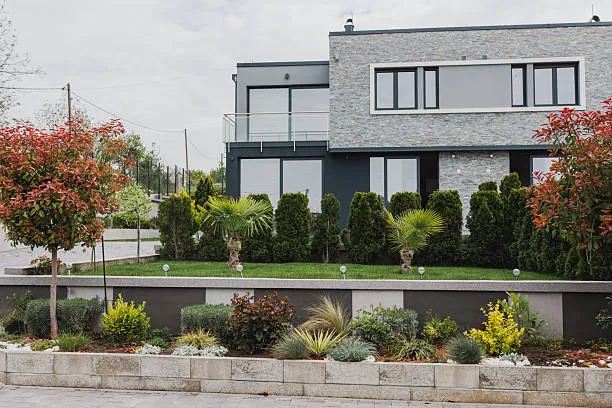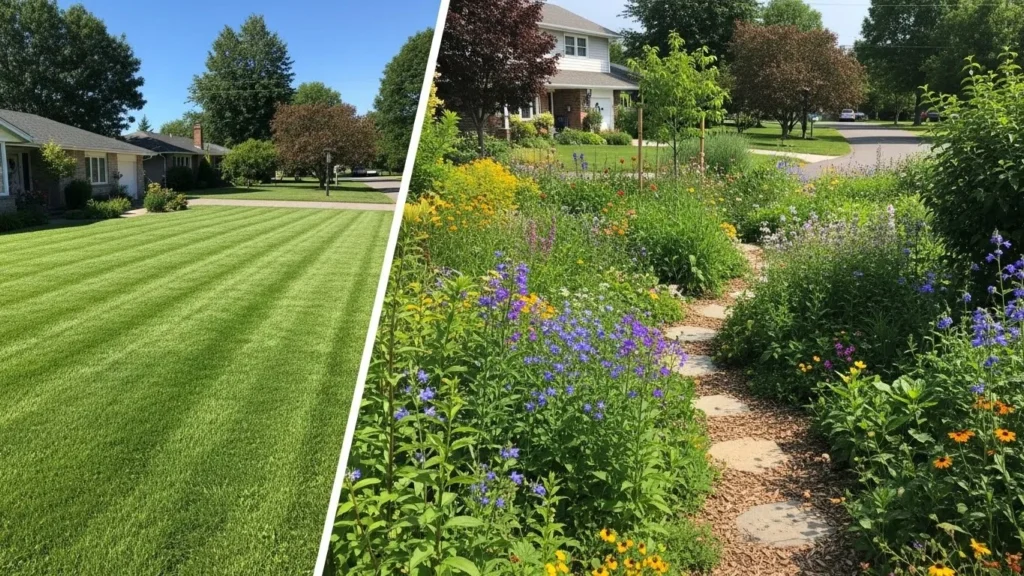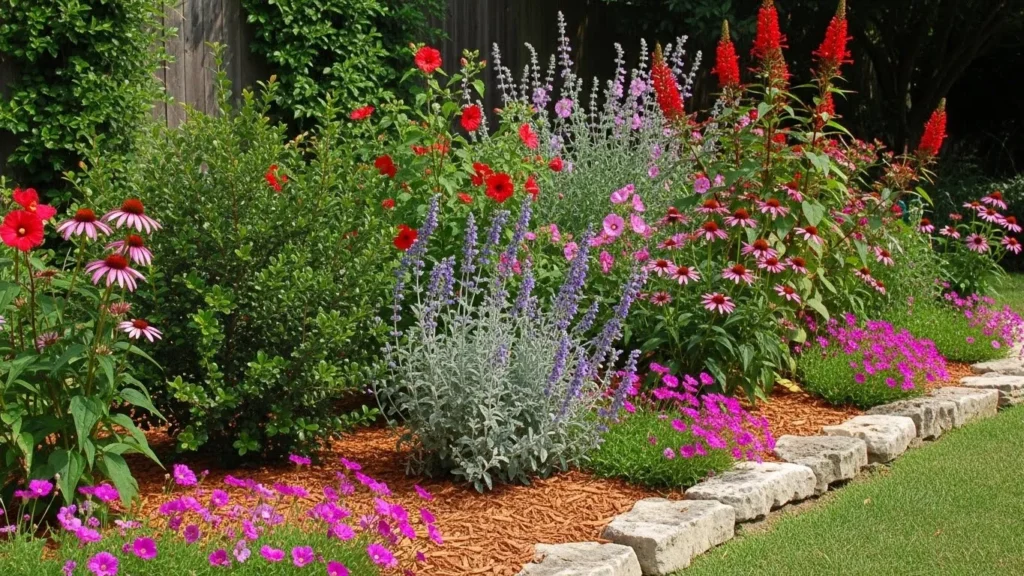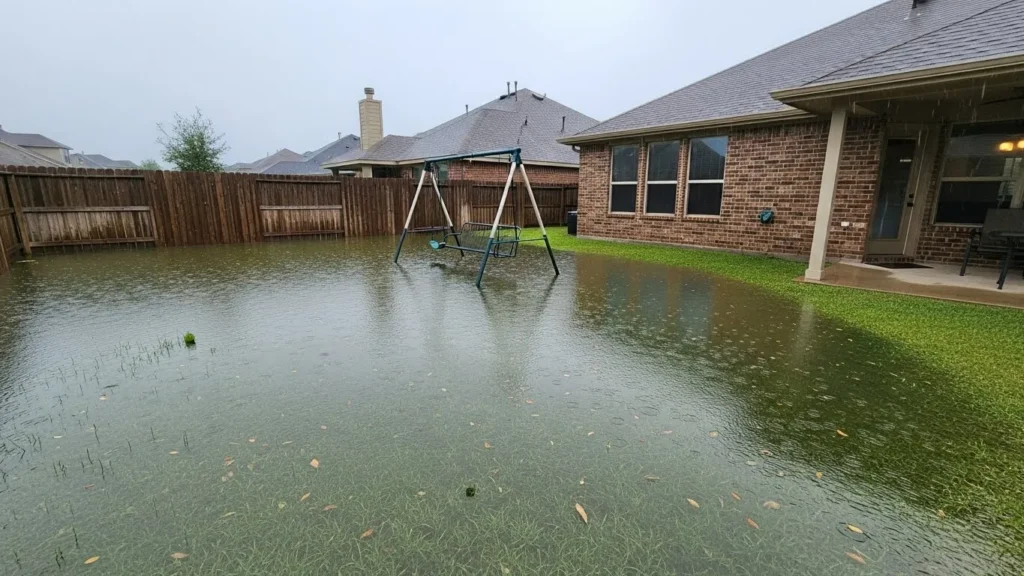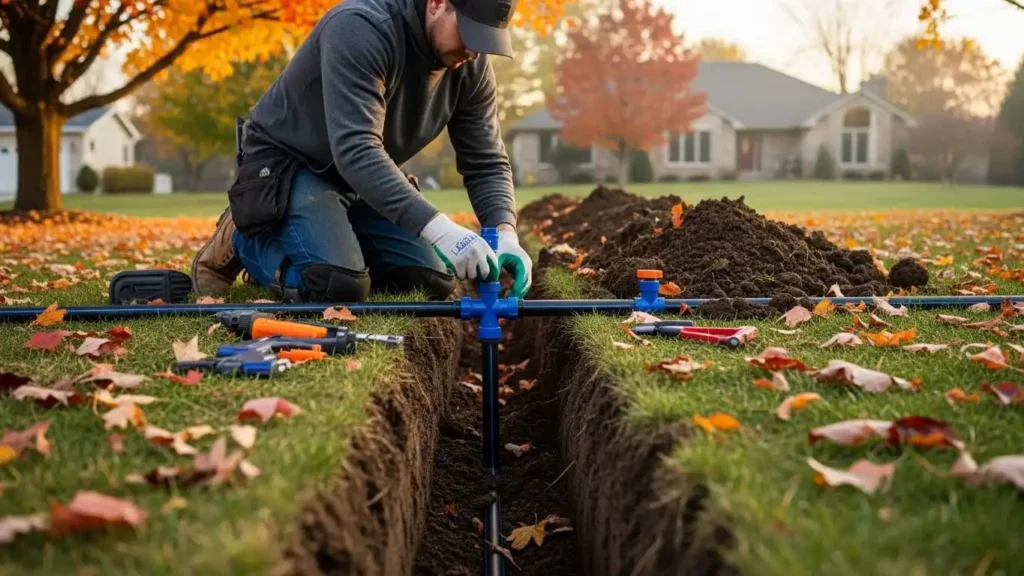The materials you choose for your hardscape make a big impact. Here’s what works best in Texas climates.
The design is just half the equation when it comes to landscaping in Texas. The other half is choosing the right hardscape materials. With the state’s intense sun, unpredictable storms, and soil that varies from sandy loam to thick clay, not every material will stand the test of time or heat.
Whether you’re building a patio, walkway, retaining wall, or decorative feature, your material choices can make or break your project in terms of durability, aesthetics, and cost. In this guide, we’ll break down the most popular materials and explain how they hold up in real Texas conditions.
Table of Contents
ToggleUnderstanding Texas Landscape Challenges
The environmental conditions across Texas are as varied as they are demanding. This diversity means that when planning a hardscape project, a one-size-fits-all approach simply doesn’t work.
Still, despite regional differences, there are a few environmental challenges that most homeowners face when it comes to building and maintaining durable outdoor spaces. Understanding these issues is the first step to choosing the right hardscape materials that will stand the test of time.
-
Heat
In many parts of the state, temperatures routinely exceed 100°F for days or even weeks at a time. This intense heat doesn’t just make your backyard feel like an oven. It directly affects your hardscape.
Materials like untreated concrete or dark-colored stone can absorb and retain heat, making them uncomfortable or even dangerous to walk on barefoot. Over time, constant exposure to intense heat and UV rays can lead some materials to crack, fade, or warp. This is especially important to consider when choosing pavers, tiles, or stone that will be exposed to direct sun, such as patios and walkways.
Pro Tip: Lighter-colored materials tend to reflect more heat and stay cooler underfoot, making them a smarter choice for sun-exposed areas.
-
Soil Movement
Another big issue in Texas landscaping is soil composition, particularly the prevalence of clay-rich soils. Clay soil is known for its tendency to expand when wet and contract when dry. These repeated cycles can wreak havoc on any rigid structure built above it.
Improperly prepared hardscapes may shift, crack, or become uneven over time due to this “soil heaving.” This is particularly problematic for patios, retaining walls, or decorative stone pathways that rely on level support to maintain their structure and appearance.
To combat this, it’s crucial to install a solid sub-base and use materials that can flex slightly without breaking. For instance, interlocking pavers can move slightly with the soil without cracking, making them ideal for areas prone to shifting ground.
-
Rain and Runoff
Texas is known for its dramatic weather shifts, and flash flooding is common in many parts of the state. That’s why proper drainage should never be an afterthought in any hardscape design.
When hardscape materials are installed without considering water flow, rainwater can pool in unwanted places, leading to erosion, slippery surfaces, or even damage to your home’s foundation. Some materials, like decomposed granite, allow for natural drainage, while others such as concrete require thoughtful grading and water channels to manage runoff effectively.
Smart hardscaping works with the land, not against it. For example, if water tends to pool in your yard, adding a French drain system may help reduce erosion and protect your hardscape investment.
-
Design and Durability
The challenges presented by Texas’ climate and soil conditions directly affect how your outdoor space looks, feels, and functions over time. Choosing the wrong materials can lead to cracked walkways, sun-scorched patios, and costly repairs down the line.
That’s why selecting the right Texas landscaping stones, pavers, and other hardscape materials isn’t just a design decision. It’s a structural one. The best materials are those that complement your vision and are built to withstand the unique conditions of your property.
Top Hardscape Materials for Texas Homes
Beyond just aesthetics, you have to consider how each material performs in intense heat, unpredictable rain, and shifting soil. Let’s walk through the best options, including the pros and cons of each.
-
Flagstone
Flagstone is a timeless favorite, and for good reason. With its irregular shapes and earthy tones, it adds a natural, organic feel to patios, walkways, and garden sitting areas. Since it’s laid in individual pieces with gravel or sand joints, flagstone is more forgiving when it comes to soil movement, making it a smart option for many areas in Texas.
Pros:
- Naturally slip-resistant, making it ideal around pools and wet areas
- Stays cooler than concrete or brick under the Texas sun
- Each piece is unique, offering a custom, high-end look
Cons:
- Typically more expensive than other materials
- Installation requires care and experience to avoid uneven surfaces or tripping hazards
Best Use: Patio spaces, garden paths, pool surrounds
-
Pavers
Pavers are made from concrete, stone, or brick, and can be arranged in patterns to suit virtually any style. Their modular nature allows for a tight, uniform fit while still leaving room for slight movement (which is crucial for areas with clay soil). Plus, if one cracks or chips, you can simply replace it without disturbing the entire surface.
Pros:
- Built to withstand heavy use, including both foot traffic and the weight of vehicles
- Easy to repair – just remove and replace individual pavers
- Available in endless colors, textures, and styles to match your aesthetic
Cons:
- Needs a solid, well-compacted base to prevent shifting or sinking
- Darker colors can become hot to the touch in full sun
Best Use: Driveways, patios, pool decks, walkways
-
Decomposed Granite (DG)
For those looking for a natural, budget-friendly material, decomposed granite is a great option. It’s made from weathered granite that has broken down into small particles and packs down to create a semi-solid surface. When properly installed with stabilizer and edging, it offers both rustic charm and functional reliability.
Pros:
- Affordable and easy to install
- Great drainage – ideal for areas with heavy rain
- Soft, natural look that blends into the landscape
Cons:
- Can wash away during storms if not edged or compacted well
- Needs occasional refreshing as it compacts and shifts over time
Best Use: Garden paths, xeriscaped areas, informal patios, fire pit zones
-
Concrete
If you’re going for clean lines, contemporary style, or a wide-open patio space, concrete might be the material for you. Modern concrete can be stamped, stained, or scored to mimic stone or tile, giving you the flexibility of design with the strength of a single pour. It’s tough, long-lasting, and relatively low maintenance, but requires expert installation.
Pros:
- Long lifespan when properly poured and reinforced
- Can be customized in color, texture, and shape
- Holds up well to heavy use and weather extremes
Cons:
- Can crack if not reinforced or poured over shifting soil
- Less forgiving than pavers – repairs often involve cutting and repouring
Best Use: Patios, driveways, sidewalks, outdoor kitchens

What to Avoid in Texas Climates
A Pinterest-worthy patio or garden path may look amazing online but if the materials can’t hold up to Texas’ climate, you’ll end up with more frustration than function. Some look great in theory but struggle under real-world conditions like blazing sun, heavy rain, or shifting soil. Here are a few materials you should approach with caution and why they might not be the best fit for your outdoor project.
-
Smooth River Rocks
The issue: They’re beautiful – no question. With their polished surfaces and natural hues, smooth river rocks can add a tranquil, spa-like vibe to any landscape. But the downside? They become extremely slippery when wet.
Whether you’re using them in pathways, around pools, or as decorative edging, this slickness can become a real safety hazard after it rains. Plus, they don’t lock in place easily, so over time, they can shift, scatter, and require regular upkeep.
Better alternative: Crushed stone or angular gravel offers better traction and stays in place much more effectively.
-
Softwood Decking (like pine or cedar)
The issue: Softwoods may be more budget-friendly and are often marketed as “natural” or “easy to work with,” but they simply don’t hold up well in Texas heat. Constant exposure to the sun can cause warping, cracking, and fading.
Combine that with moisture from rain or humidity, and you’ve got a recipe for rot, mildew, and a deck that quickly looks tired and worn-out. Unless you’re prepared to seal and maintain it regularly, softwood decking becomes a high-maintenance choice in our climate.
Better alternative: Go for composite decking or heat-treated hardwoods like ipe, which resist warping and require less upkeep.
-
Unsealed Bricks
The issue: Bricks are a classic choice, but when used in high-moisture environments like along the Gulf Coast or in areas with poor drainage, they can absorb water. Over time, this leads to erosion, moss growth, and even crumbling.
Unsealed bricks are especially vulnerable to frequent rainstorms and shifting soil, which can crack mortar joints and loosen their base. Bricks also retain heat, which can make them uncomfortable underfoot, especially in full-sun areas like patios or garden paths.
Better alternative: Choose sealed or kiln-fired bricks made for exterior use, or consider concrete pavers that offer a similar look with greater durability.
Choosing Aesthetic vs. Function
Let’s face it. We all want our yards to look great. However, aesthetics should never come at the cost of function.
- Want a rustic look? Flagstone and decomposed granite blend well with natural landscaping.
- Prefer something sleek and modern? Concrete or uniform pavers give you control and clean lines.
- Need low maintenance? Opt for pavers or reinforced concrete with minimal grout lines.
A good landscaping professional will help you balance both worlds based on your budget, climate zone, and lifestyle.
Conclusion
Choosing the right hardscape materials for your Texas property is a decision that pays off for years. With our state’s extreme heat and unpredictable weather, you need materials that look good and hold strong.
At Let Us Do It Landscaping, we specialize in helping homeowners choose and install durable, beautiful hardscapes using high-quality pavers, landscaping stones, and more. We know the climate, we know the soil and we know how to make your project last.
Visit Let Us Do It Landscaping today for a free consultation and see how the right materials can transform your outdoor space.
